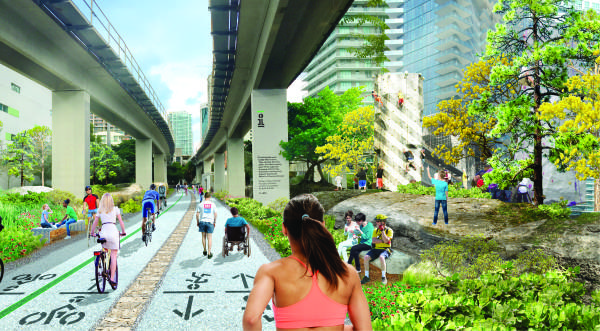Conde Nast Traveler: From NYC’s High Line to Miami’s Underline: How Linear Parks Are Changing Cities
New York’s High Line is world-famous, but it’s not the only project seeking to transform abandoned locales into beautiful green spaces.
In 1981, what is now New York’s High Line—the railway-turned-linear park that runs down the west side of downtown Manhattan—almost became an inventive residential complex called the Bridge of Houses. The project, which was proposed by architect Steven Holl to transform the elevated tracks into a series of “villas” and courtyards, never came to light and the eyesore sat unused for almost three decades.
Ahead of his time, Holl foresaw how our cities would constantly reinvent themselves: When the High Line opened its first phase in 2009, it arguably became one of the most influential examples of how an increasingly dense area can become more livable by reclaiming abandoned infrastructure and adapting it into much-needed park space for city dwellers. This concept, known as adaptive reuse, is now one of the most popular methods for transforming urban landscapes.
These greenways, popular among locals and tourists alike, are attractions that are becoming as ubiquitous as traditional parks like Paris’s Jardin des Tuileries or New York’s Central Park. Seamlessly transporting visitors from one neighborhood to the next, landscaped promenades make for well-rounded excursions suited to wayfarers, design aficionados, aspiring horticulturists, and those just in need of a break from the surrounding city.
From Miami to New York to Seoul, the latest iterations of the adaptive reuse phenomenon present creative ways to transform existing infrastructure with new technology, art initiatives, and green spaces. Here, we detail the three projects to watch. Click here to read about how The Underline is inspiring public art and mobility.
